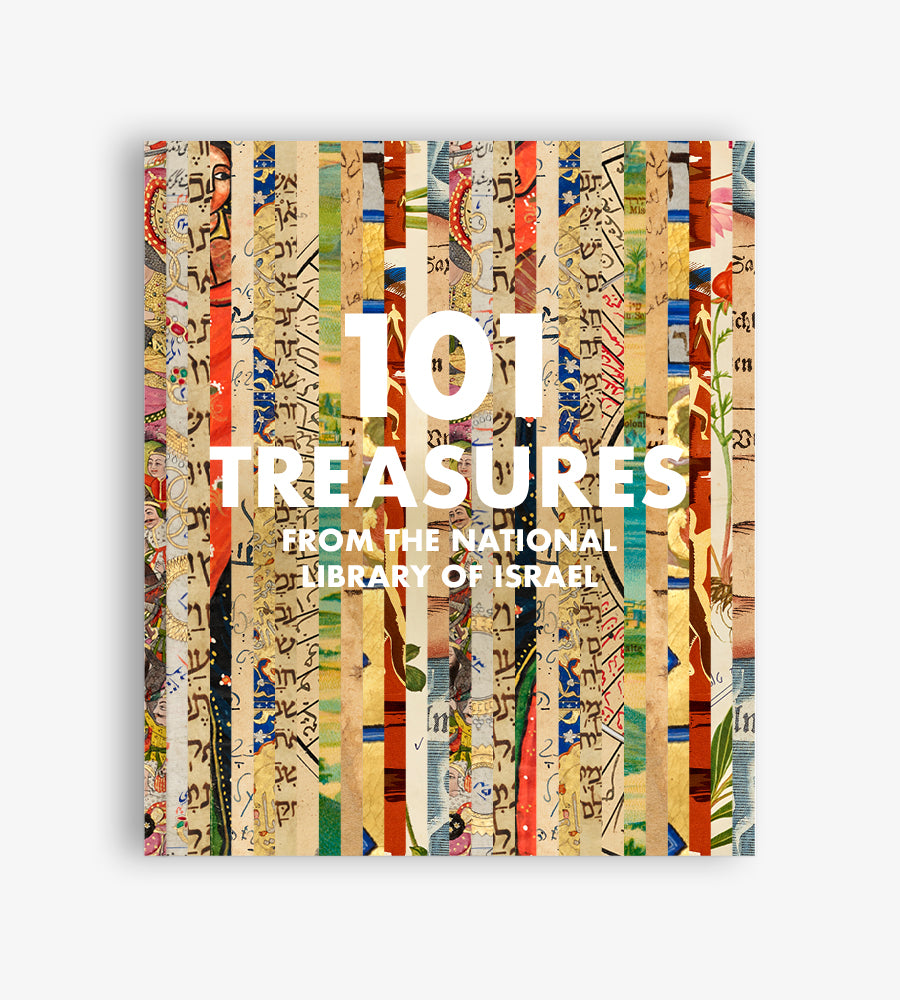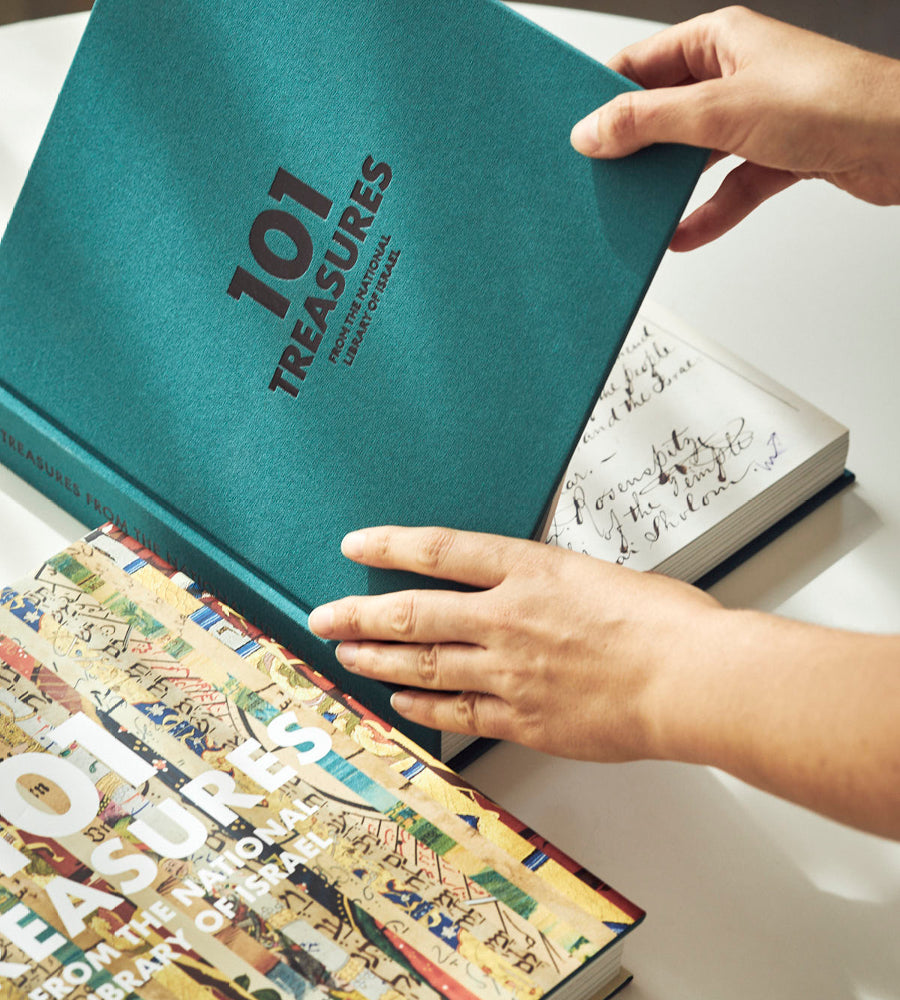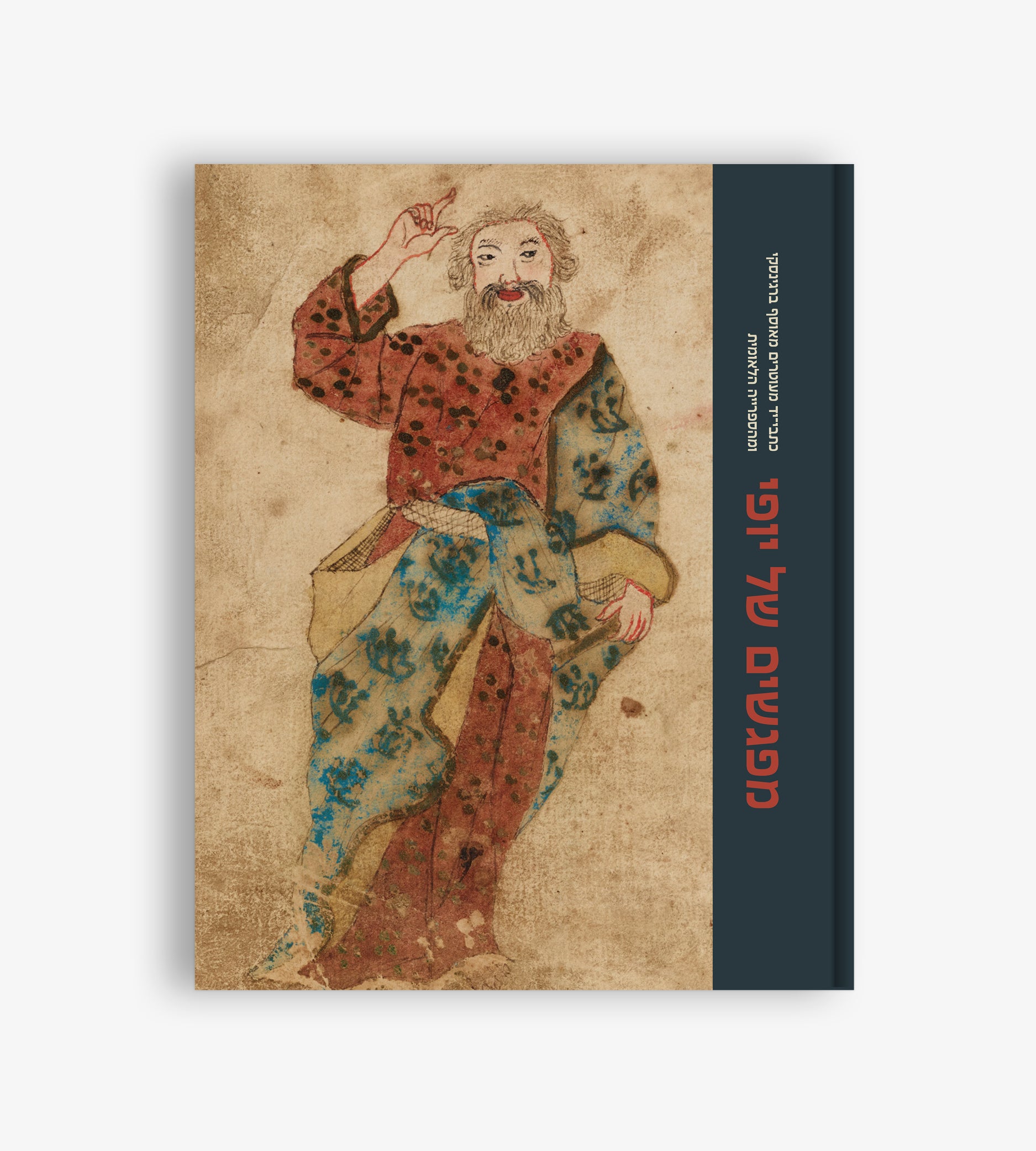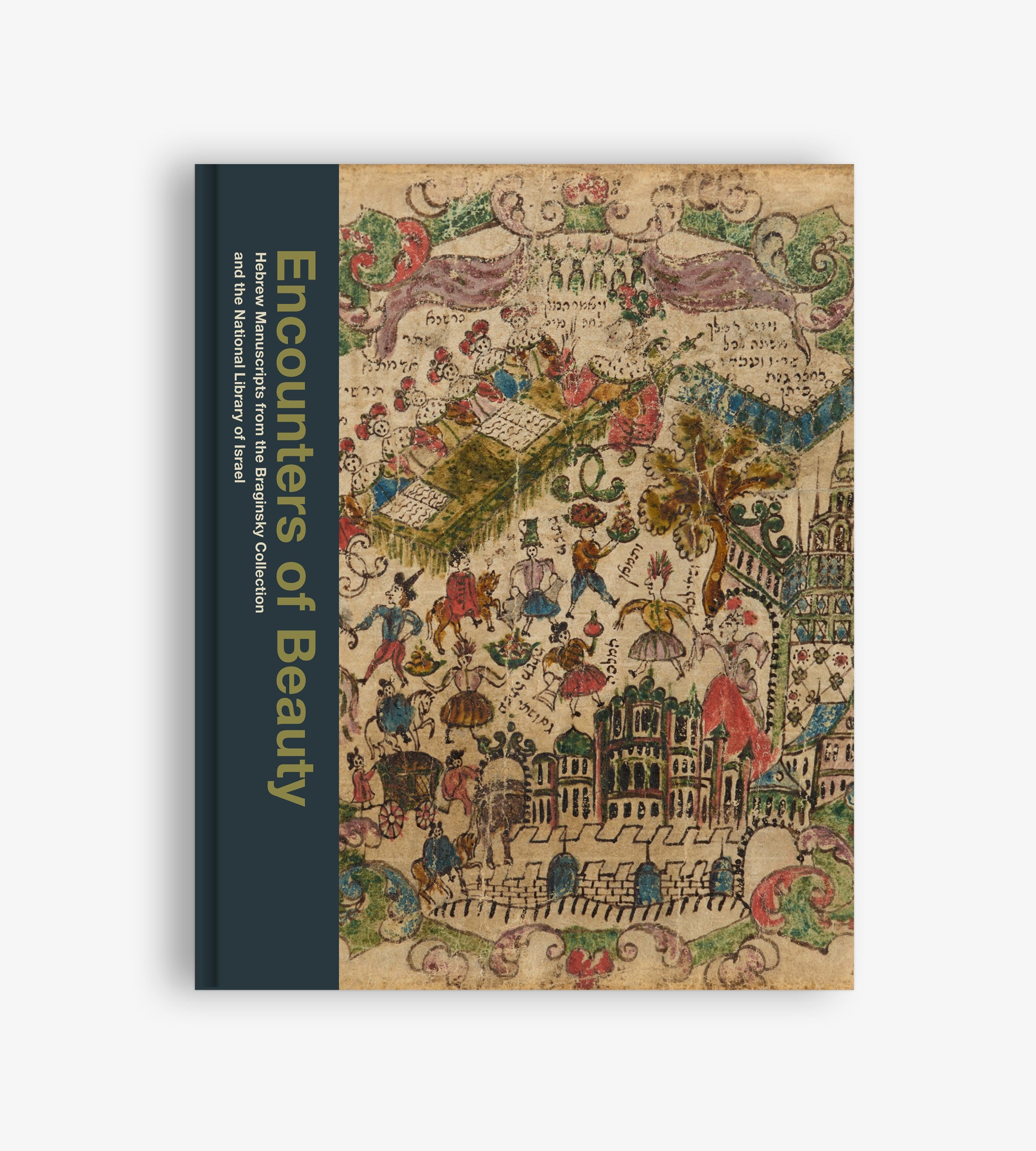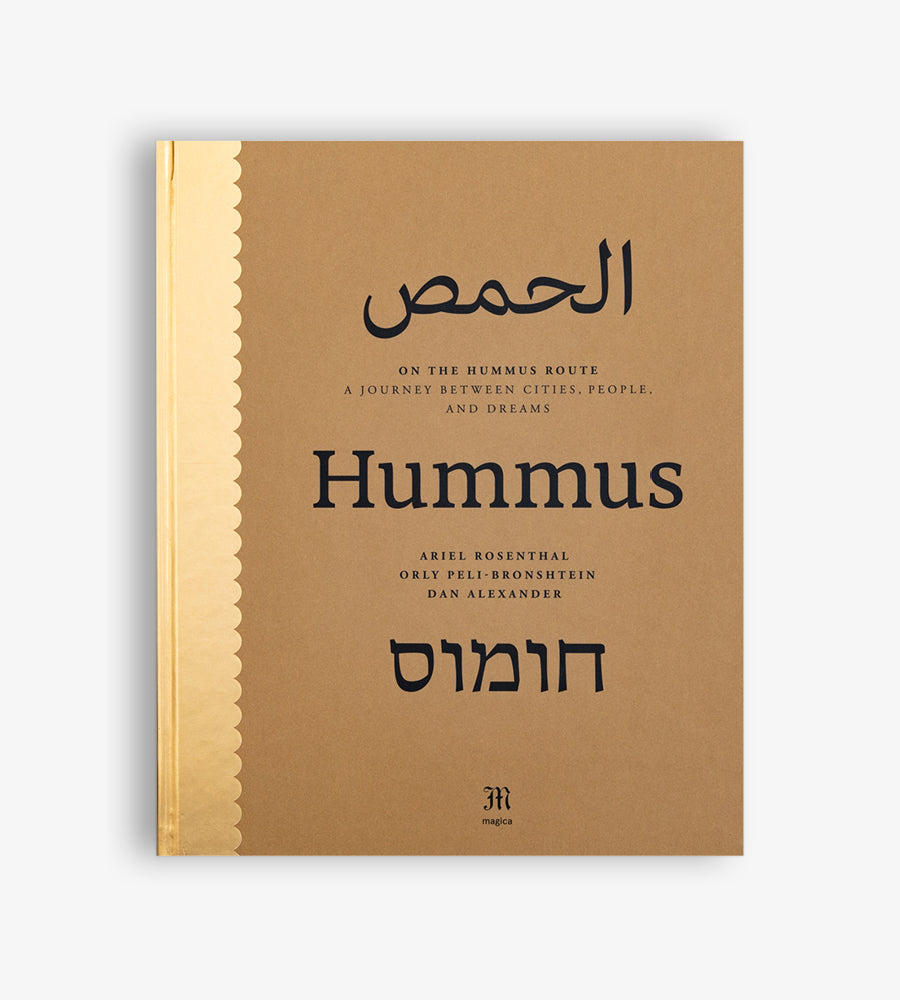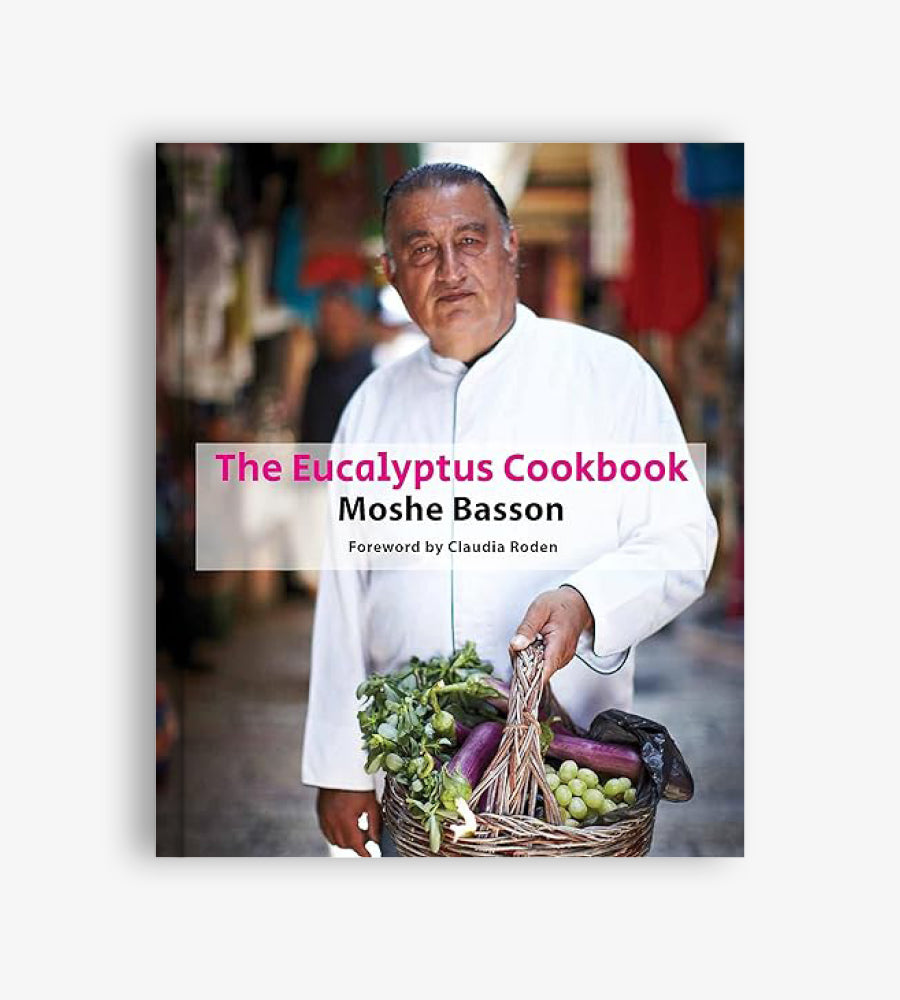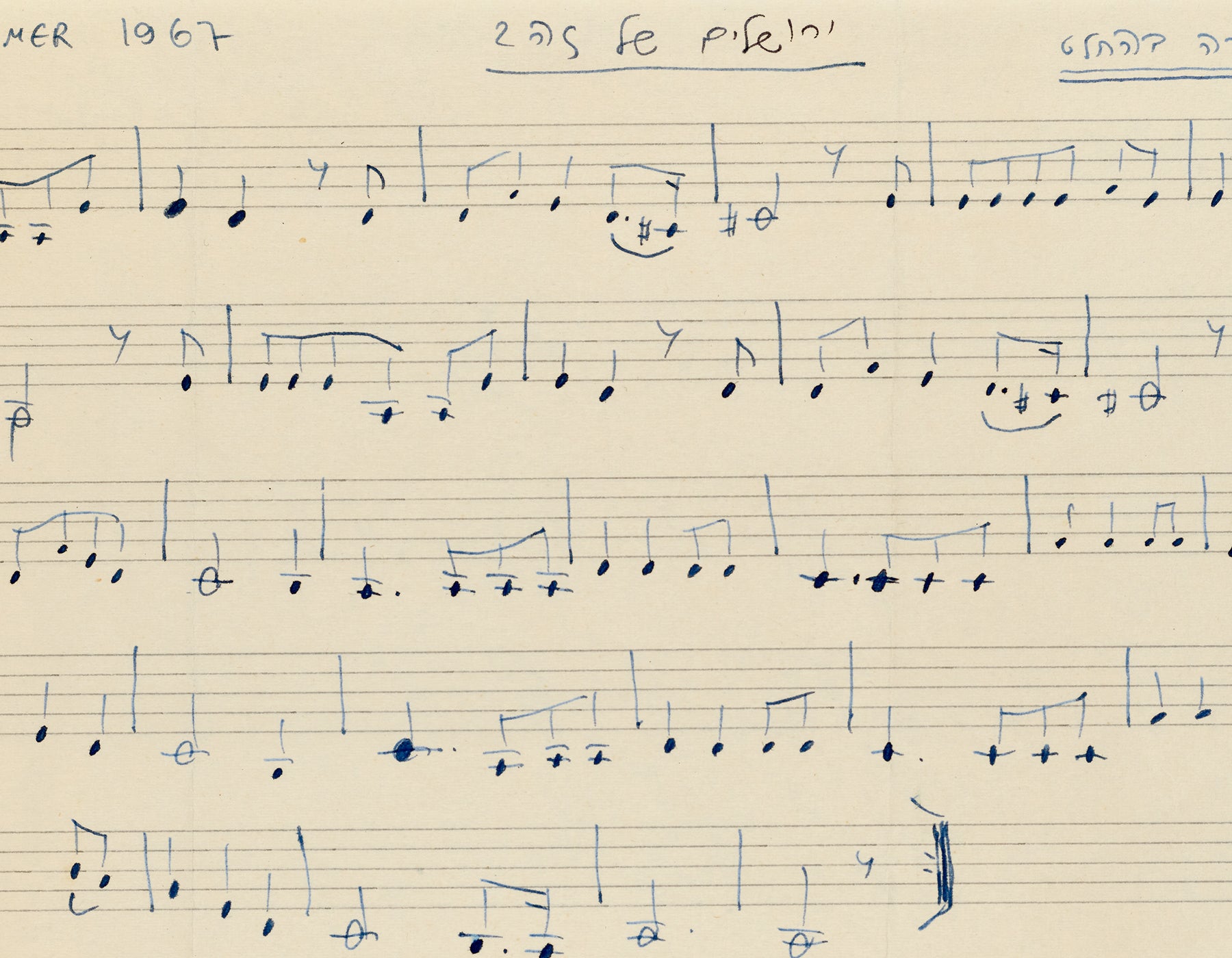
The City of Gold
Gila Flam and Tamar Zigman

Between 1960 and 1980, the national celebrations of Israel’s Independence Day concluded with a song contest produced by the Israel Broadcasting Authority and broadcast live first on radio and later on national television. In early 1967, the organizers agreed to honor the request of Jerusalem’s mayor, Teddy Kollek, and include five additional songs about Jerusalem. They commissioned five different composers, among them the young songwriter Naomi Shemer (1930–2004).
Shemer was initially reluctant to take part in this venture, regarding herself unworthy of continuing the legacy of poets who had written about Jerusalem, such as the renowned twelfth-century poet Judah Halevi. However, she subsequently accepted the challenge and gave voice to her own affection for the city. Searching for a theme, Shemer recalled a Talmudic legend about Rabbi Akiva, who promised his wife, Rachel, “a city of gold,” namely, a piece of jewelry in the shape of Jerusalem. Redirecting this idea to the actual Jerusalem, Shemer wrote three verses and a refrain, describing the now forsaken city, once the home of the Temple and center of Jewish pilgrimage. The song, performed by the singer and guitarist Shuli Nathan, then a twenty-year-old soldier, was received enthusiastically by the audience and achieved immediate hit status in Israel.
In June 1967, the Six-Day War broke out, and Shemer, like other artists, went to Sinai to perform for Israeli troops. On the way, she heard on the radio that the Israeli Army had taken the Old City of Jerusalem, soldiers were standing in front of the Wailing Wall, and a shofar was being blown. Shemer took out her diary and added a fourth verse to the song: “We have returned to the cisterns, to the market and the marketplace; a shofar calls out on the Temple Mount in the Old City.”


